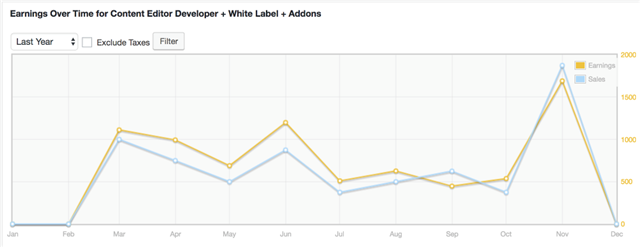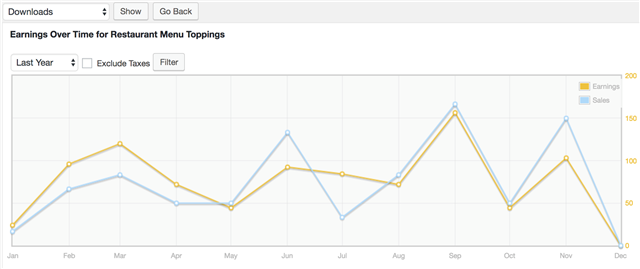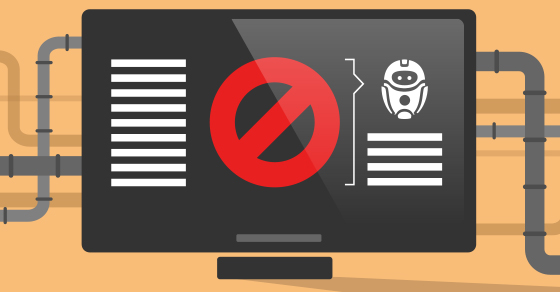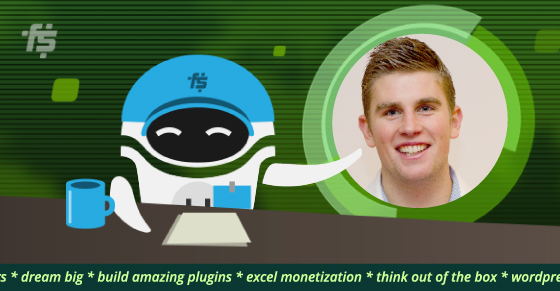|
|
In this guest post by Alexander Mat, co-founder at MotoPress, he shares and discusses his company’s biggest challenges in today’s saturated and Guten-stirred WordPress business sphere. MotoPress has been financially successful in creating WordPress plugins and themes for small and midsize businesses for quite some time now, so it is interesting to get Alexander’s take on the current state of things. Alex – the stage is all yours!
In this post, I want to tell a bit of the MotoPress story and share all those major present-day challenges that you may relate to an oversaturated WordPress market, underpriced themes and plugins, independence or marketplaces (the perennial question), etc. I will also share some tips on how we solve (or don’t solve) the puzzles. It will likely help you avoid our mistakes or make better choices for your WordPress business.
A Saturated WordPress Market Environment
Even five years ago, when we were building the MotoPress Content Editor plugin, it was clear that frontend editing, drag-and-drop, and a block-based layout system is a goldmine. We could focus on the editor only, but we started creating roadmaps for other plugins and themes (which are the reality now) still putting the most effort into the editor. Why? Because it was too much of a goldmine to give ground for understanding that competitors wouldn’t wait too long.
There are always people who invest more money and resources, so we knew things were not going to run smoothly forever and decided to go with the risks eliminating strategy. And that was a good choice because it’s not only Beaver or Elementor now, it’s Gutenberg (more on this below).
We oftentimes bend over backward to ensure continual development of existing products and work on new ones – equally. As we have plugins and themes for absolutely different niches and purposes in store (and it’s really hard to market all of them on one website) we’ve naturally shaped it into a small one-vendor marketplace. A few sorting clicks – and a visitor gets what they need. So, we believe that another good way to meet the market saturation challenge is to diversify the product line – and very specific niche products show greater potential.
A good way to meet the market saturation challenge is to diversify the product line – and very specific niche products show greater potential.
For example, instead of a multipurpose WordPress booking plugin, which may seem a better option from the commercial point of view, we created a specific WordPress booking system for rental property. And now we are selling it with absolutely all possible crazy business features included, so the multipurpose booking plugins are not ready to compete to the full. This plugin opened up the opportunity for creating additional products around it: several powerful property rental themes (people are calling them “best for this purpose”), new (paid) add-ons, new connections with developers and agencies, etc. However, in the beginning, it was just an MVP.
We’ve learned that niche-specific WordPress plugins or themes won’t give immediate results, but in the long run, they help you become an expert in the field, reduce competition and increase your income.
Niche specific WordPress plugins or themes won’t give immediate results, but in the long run, they help you become an expert in the field, reduce competition and increase your income.
Diversity is also a good way to survive in a saturated WordPress market environment, but don’t go too far! We had a rather unsuccessful experiment with PrestaShop. We created a cool layer-based PrestaShop product slider, but it didn’t sell well – it turned out there are not so many people ready to buy a Prestashop thing from WordPress guys (we did not have any dedicated website for the slider), so don’t laugh when marketers tell you about the importance of customer persona and target audience. It’s now being sold only on the PrestaShop market.
Moreover, I don’t know if it’s just our case, but we learned that it’s a completely different community – not that friendly (sorry PrestaShop!), collaborative and open as the WordPress one. Many outreach emails to PrestaShop related blogs were suspected of conspiracy (like “who do you work for?”), etc. Have you heard of ambition trap? It’s when you have lots of ambitions and energy to do different things, but prioritize wrong and end up in a trap. We now see only rare purchases of PrestaShop-ambition slider and kinda regret the time wasted – the ROI figure leaves much to be desired. Spreading yourself among different directions without a plan and market research is not the way out, you risk outsmarting yourself!
Marketplace Or Not Marketplace?
Another way that helps us stay afloat, which may seem obvious, is increasing the sales channels. We constantly stumble across stories of how renowned companies are leaving marketplaces behind for the sake of independence.
We can’t afford to be that trendy: instead, we bombard marketplaces with product submission. I know that we have to play by their rules, but it’s an ongoing revenue in the long run after all. However, we’ve started using marketplaces to the fullest pretty late, just about 2 years ago; only the editor has been there for a longer time, but we did not put any marketing efforts into it, completelу relying on Envato advertisers.
I think marketplace fanaticism is intrinsic to “newbies” who want to let the world know about their existence. Established companies often tend to get rid of the marketplace “burden”. So I’m not sure where we are going to be in a few years, but at the moment I realize that marketplaces is a good way to ensure the eggs are not in one basket. Extra income is a good bonus, too. Our revenue on marketplaces is increasing slowly, but steadily. For example, Envato:

Apart from ThemeForest and CodeCanyon, MotoPress is a vendor on TemplateMonster, CreativeMarket, and Mojo.
Our WordPress themes are performing equally on TemplateMonster and ThemeForest while the plugins are doing better on CodeCanyon. Example:

My assumption is that there are two main reasons for it: the audience of TemplateMonster is commonly non-tech people who are most likely looking for themes rather than plugins. Secondly, the themes competition is not that hard there yet as the concept of a multi-vendor marketplace is quite new for TemplateMonster. It means your odds to sell a theme there are still good. But their average theme prices are higher, so people more often buy from ThemeForest. If there are lots of your theme downloads and positive reviews on TemplateMonster, they may give it an extra boost by means of their own, which is also cool (they created a promo video for 2 of our themes and it did not cost us a dime).
As for other marketplaces, Mojo is quite reputable among buyers. Though their submission process is rather tedious, our plugins and themes are being sold on a regular basis, but less often than on other mentioned marketplaces. Creative Market is only good thanks to instant submission approval, it provides the smallest supplement to the overall income.
Oh, and should I mention that all lite versions of our plugins and themes are on WordPress.org as a rule of thumb? WordPress.org is always our #1 referral resource:

To sum up, these are our main strategies to hustle in a saturated WordPress business market environment that works for us:
- think forward and get prepared for global changes (keep up with the market)
- increase the sales channels (the plugins competition on Envato is less fierce than themes competition)
- diversify a product line (wisely) instead of focusing on one product only
- improve quality of existing products consistently – let customers see the progress
- use the products you sell – this will make your marketing more efficient
- niche products are easier to market with a small budget and are more sustainable in the long run.
To an extent, the complexity of all these things provides us flexibility and sustainability which are crucial in a growing WordPress market. Do you think they can work for you?
Choosing The Most Profitable Pricing Model for Our WordPress business
Many people have come to expect WordPress to be cheap, if not free. It’s hard to break this “standard” and set prices that reflect the real value of the product. It is really challenging to “prove” to customers that the price is fair or that the price increase is reasonable.
There are too many aspects that can be covered on this topic, so I’ll just specify what models/strategies we use and what shows the best potential. Currently, we rely on the following pricing models:
- Lite + Premium (yearly updates and support in Pro) – 2 plugins and 4 themes
- Free core plugin + paid add-ons – 1 plugin
- Bundle – Content Editor + all premium add-ons
- Support for free products
- Membership – all plugins and themes (current and upcoming) at one price
As you can see, the vast majority of MotoPress products use the freemium pricing model and subscriptions as they proved to be most sustainable. There is no need to show the difference statistically as all products are of different nature, purpose, and price.
However, here are some of our observations about why some models work well and others don’t:
- Users are always ready to upgrade if they like your free product (and this is your chance to get that sweet wp.org traffic!).
- Subscription guarantees sustainable profitability (on a regular basis).
- Discounted suits (bundles) provide some extra income as people tend to get more complementary products at a discounted price:

- In the case of the add-ons for our free Restaurant menu plugin – they don’t provide a very consistent income, as you can see in the graph below. Therefore, it may be risky to run a small WordPress business if it’s based solely on the free core and paid add-ons model:

- It’s hard to market the Membership package of diverse plugins and themes as the target audience is narrowing for developers who work with different client projects. The price of our Membership is quite affordable for agencies, but the target audience is small.
If the pricing of WordPress themes is more or less standardized, the situation with the plugins is completely different. At least in our WordPress business vertical of small to midsize commercial websites, it would seem that no matter the value the plugin provides to the customer, the latter got used to relatively low pricing. While this claim may not hold true for all WordPress business niches and types of plugins, and especially when comparing the WordPress market with the mobile applications market, for example, where apps are sold for just a few dollars for a life-license, we still feel like our WordPress business niche could use a general prices increase. So, we have tried taking steps towards that. For example, we’ve learned that there are always 2 important points for setting a price: competition and value. We always try to stick to them when setting our prices.
We haven’t changed the cost of our Content Editor because the competition is really hard, but we do practice a penetration price (from lower to higher over time) with all other plugins. For those clients who are asking about our increased pricing, we try to convey the value of the product in details, the time spent on development and improvements – those value and competition moments actually. If it’s not enough, we try to explain how much it would cost to hire a developer to create the same complex functionality – it eventually leaves no room for counterarguments.
For clients who are asking about our increased pricing, we try to convey the value of the product in details, the time spent on development and improvements.
If you have data-driven analytics on your customer persona, you can realize that increasing the price can even attract another group of customers who know the price of the quality product well.
Fortunately for us, increasing the prices did not result in decreased sales, so this is also a great way to stretch the income. Honestly, there won’t be a better time to start ruining a myth about cheap WordPress. I don’t want this “standard” to become a point of no return. Do you?
Gutenberg
So, are you siding with the claim of calling Gutenberg a challenge? An obstacle? I know what you think – one more page builder developer who is quick to demonize Gutenberg. Or, you probably totally agree that it poses a range of problems. Well, everyone is entitled to an opinion, but I’m not a fan of “if you are right, it doesn’t mean I’m wrong” statement. More informed opinions are always more valuable.
Here at MotoPress we feel a complete controversy. At one of our meetings where we practice the SWOT method (a fantastic help in setting priorities), Gutenberg first got to the “Threats” list and then was quickly moved to “Opportunities”. I’ll explain.
We are trying to look at what’s going on around the Gutenberg project from at least 3 different perspectives: philosophy, business and, of course, the tech side. And they are definitely connected.
When I’m reflecting on the philosophical side of the project, and I see how many people dismiss it (often comparing with commercial builders), it reminds me of the story of Nicola Tesla and Thomas Edison (bear with me for a minute?).
Tesla is known as the “inventor of the electrical age” as he invented the alternating-current system of electric power transmission. Edison, who had invented the direct-current electric system before that (let’s call it the beta version), understood the importance of Tesla’s invention. Edison was no longer a game-changer, but he kept dismissing Tesla’s revolutionary ideas because of own ambitions, unwillingness to acknowledge defeat, etc. But if Tesla hadn’t invented it, someone else would have. So I see no point in dismissing something that is inevitable. Gutenberg is inevitable in terms of competing with Medium, Wix, or Squarespace. Even if we take WordPress.org, not WordPress.com into consideration.
Here come the business reasons – to make WordPress most attractive and user-friendly for everyone, to help it evolve, and only increase the market share over time.
We would still prefer to see Gutenberg as an optional free thing – giving freedom of choice is always better (isn’t that the purpose of self-hosted WP sites)? But in any case, a powerful free WordPress native toolkit for a perfect writing experience, able to outperform other giant competitors, sounds like a need.
I even played around with a popular meme the other day:

But then, it’s a technical side. Turning on the dev mode in my mind and being perfectly honest, I don’t like how Gutenberg operates now – the lack of so crucial responsive columns and complex layouts, full darkness of how it will affect theme development (does the theme still control everything?). The problem with backward compatibility is scary because of the amount of work to be done as lots of our plugins are integrated with TinyMCE. It’s kind of a threat to the MotoPress Content Editor, no need to explain the reasons, even though we are absolutely open for smooth integration. And we are only scratching the surface.
But should we blame Gutenberg or simply get involved? What if some of our “concerns” are already solved when you are reading this post? So I’m simply doing my everyday management and development work waiting for clear guidelines and more advanced versions of Gutenberg.
We’re also thankful to Ahmad Awais and his well-structured Gutenberg Boilerplate and Guten Blocks projects, which sped up the process of digging into Gutenberg for WordPress developers who are overloaded with their daily jobs.
It’s also obvious that commercial WordPress page builders are not going anywhere. There is such a thing as habit and loyalty. With Gutenberg being on the horizon, the builder creators will polish their products even more (spoiler alert: we are already doing it) making them even more attractive and efficient. So each builder will still have its fans, though the fight for fans is going to be tenser.
Grab a free copy of our Cheat Sheet for
Selling Plugins and Themes
A growth roadmap with concise, actionable tips for every milestone of WordPress product development.

Bottom line: no matter how we feel about it, Gutenberg is a tipping point for WordPress. It’s clear that the success of this project rests on the shoulders of all of us: what sort of image and reputation we create and spread about it in its early stages, how we report the issues and how we help address them, whether our critical thinking helps improve it or scare people away from it (and wp.org per se). It may become our best or our worst, but it’s in our WordPress business interests to make it best and adapt. Sounds pathetic, I know, but Steve Jobs used this same (marketing) way to make users’ devotion to their brand almost religious.
Honing Marketing Art During The Battle
Envisioning a marketing trajectory without a huge marketing department is sometimes just squaring the circle. When there is not too much time for theory, we are learning “during the battle”.
We are not talking about traditional email marketing, leads generation, or guest blogging strategies, which are still highly important for us, but rather fundamental aims that are harder to pursue for small WordPress plugin and/or theme business company comparing with established giants. I’m referring to:
- Keeping brand image and increasing its recognition
- Searching for viable WordPress business opportunities
- Creating and protecting your brand concepts
All of these include a complex combo of interaction with customers, WordPress community engagement, conveying product quality, business communication, social media activity, creative marketing etc. that lead to scaling the business. Working in these directions require a right time balance of management/product development with creativity/marketing. Sometimes playing too long with only polishing the products and forgetting about marketing can backfire dramatically – we start doing all at once in the marketing arena, losing focus and balance.
Playing too long with only polishing the products and forgetting about marketing can backfire dramatically.
It’s important to elaborate on just some of those points – where we had to learn from our mistakes.
As for the brand concepts that are directly connected with marketing and sales, here is the case:
We try to create WordPress native themes without crazy bells and whistles, we even don’t include our flagship editor if it doesn’t fit into a theme niche and concept. Many developers and tech-savvy customers are always extremely grateful for such solutions, and we try to spread this idea among prospects, but the market is just not there.
Don’t get us wrong: we don’t want to fuel the “developer vs user” mentality, we are in the search of the right balance of creating user-friendly tools and making them really useful from the tech side. So, commercial themes should still be in your store (we’ve got several) to keep you realistic about the market and increase your income.
Elaborating on brand recognition, we learned that too SEO-heavy names are no good, and this is one of our current issues. The aim of an SEO-focused name was clear, but over time it became just too long and generic, not creating a proper image in people’s minds. It was too late when we had discovered “Zag” by Marty Neumeier. In this book, he advocates for unique (and short) brand names as better than SEO ones (his example was Yubop vs Personal Media Devices – guess who’s the winner?). So don’t make this mistake – remember that a cool unique brand name is a natural marketing weapon. Simplicity is key.
And if we talk about opportunities, the positive changes are evident after moving to “descriptive” strategy in content marketing for product presentation – we start focusing on describing functionality rather than writing blatant slogans, recording step-by-step how-to videos rather than pushing unclear promos, consistently creating useful evergreen blog posts rather than writing only MotoPress news, etc.
Positive changes are evident after moving to a “descriptive” strategy in content marketing for product presentation – we started focusing on describing functionality rather than writing blatant slogans, recording step-by-step how-to videos rather than pushing unclear promos, etc.
So if you are thinking about creating an expansive promo video, think again! Probably a detailed video review of real functionality and design will bring more value. People on YouTube helped us understand this by leaving aggressive comments under the promo video of our plugin.
Needless to say, we are also learning a lot from Freemius – there are simply no alternatives to such in-depth and on-time researches. Following the instructions, we’ve optimized the wp.org products pages and had plugins translated, found lots of answers to marketplace-related concerns and are working on using GIF animation in our product presentation right now.
Summing Up
It’s extremely important to keep up with a fast-evolving WordPress business market and not making mistakes that could be easily avoided at the beginning. We made a very simple conclusion: the current state of the WordPress market doesn’t allow us to rely on a series of serendipities in doing business, it requires a strong data and research-based strategy and planning, focus on creativity and building a transparent relationship. The market is full of challenges we are better to meet together, sharing experience and knowledge (it must be the work of Steve Jobs again…)
It appears that there were a dozen more points we wanted to talk about in this post, but no, each of them is too complex to cover in detail. We’ll pass the baton over to you – do you face the same issues? Do you have any killer advice on how to deal with them?










I quite agree with these points, nonetheless WordPress is still a formidable force to recon with